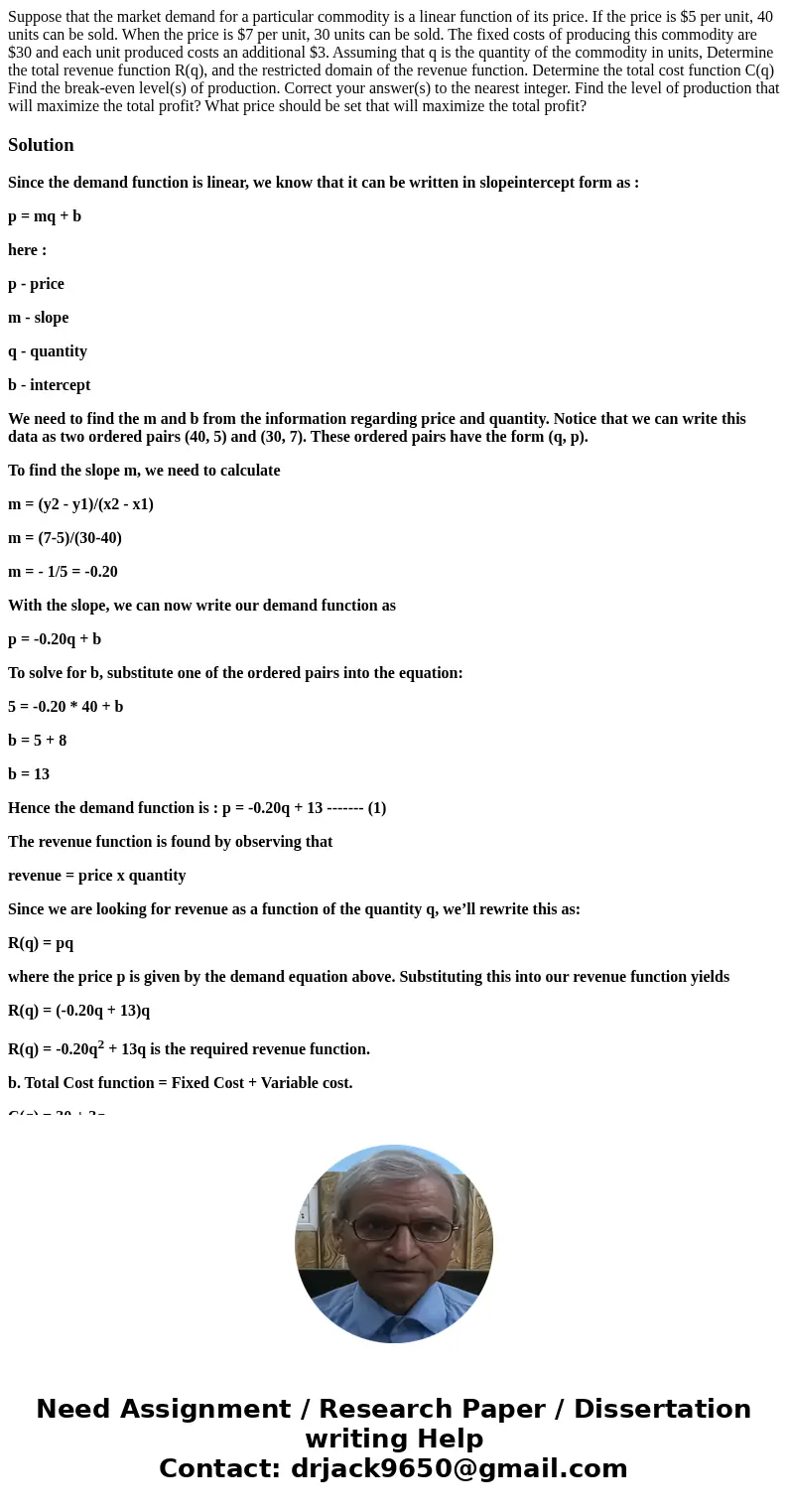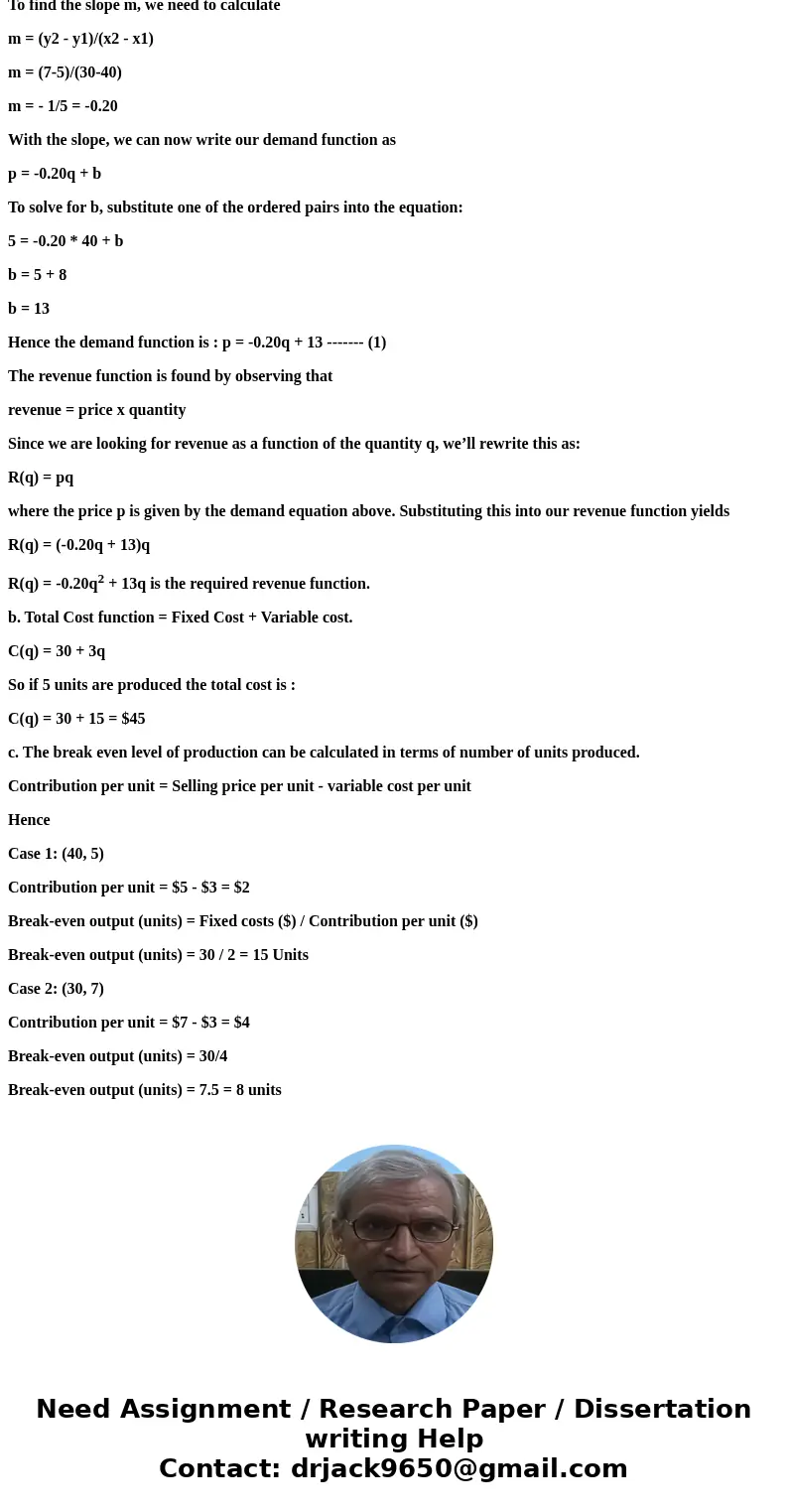Suppose that the market demand for a particular commodity is
Solution
Since the demand function is linear, we know that it can be written in slopeintercept form as :
p = mq + b
here :
p - price
m - slope
q - quantity
b - intercept
We need to find the m and b from the information regarding price and quantity. Notice that we can write this data as two ordered pairs (40, 5) and (30, 7). These ordered pairs have the form (q, p).
To find the slope m, we need to calculate
m = (y2 - y1)/(x2 - x1)
m = (7-5)/(30-40)
m = - 1/5 = -0.20
With the slope, we can now write our demand function as
p = -0.20q + b
To solve for b, substitute one of the ordered pairs into the equation:
5 = -0.20 * 40 + b
b = 5 + 8
b = 13
Hence the demand function is : p = -0.20q + 13 ------- (1)
The revenue function is found by observing that
revenue = price x quantity
Since we are looking for revenue as a function of the quantity q, we’ll rewrite this as:
R(q) = pq
where the price p is given by the demand equation above. Substituting this into our revenue function yields
R(q) = (-0.20q + 13)q
R(q) = -0.20q2 + 13q is the required revenue function.
b. Total Cost function = Fixed Cost + Variable cost.
C(q) = 30 + 3q
So if 5 units are produced the total cost is :
C(q) = 30 + 15 = $45
c. The break even level of production can be calculated in terms of number of units produced.
Contribution per unit = Selling price per unit - variable cost per unit
Hence
Case 1: (40, 5)
Contribution per unit = $5 - $3 = $2
Break-even output (units) = Fixed costs ($) / Contribution per unit ($)
Break-even output (units) = 30 / 2 = 15 Units
Case 2: (30, 7)
Contribution per unit = $7 - $3 = $4
Break-even output (units) = 30/4
Break-even output (units) = 7.5 = 8 units


 Homework Sourse
Homework Sourse